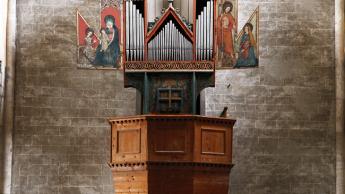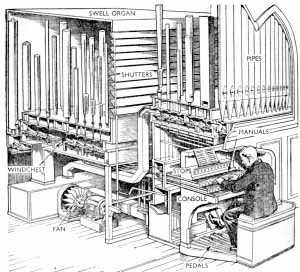Related Topics
Franklin Inn Club
Hidden in a back alley near the theaters, this little club is the center of the City's literary circle. It enjoys outstanding food in surroundings which suggest Samuel Johnson's club in London.
Musical Philadelphia
Quakers never cared much for music, but the city has nonetheless musically flourished into international fame. At the same time, quarrels and internal battles have also been world class.
Theatre in Philadelphia
Theater has declined, everywhere in the western world. But in Philadelphia, even today if you attended every new play you would keep pretty busy.
Curtis
To Cy Curtis, magazines were just vehicles for advertisers. In fact, his mags taught former farmers how to manage urban life, more or less accidentally creating a focus for American books, authors, politics and literature. The fall of his empire teaches the lesson that antitrust laws against vertical integration are probably unnecessary.
Right Angle Club 2010
2010 is coming to a close, a lame-duck session is upon us, and probably after that will come two years of gridlock. But the Philadelphia Men's Club called the Right Angle, keeps right on talking about the current scene. A few of these current contents relate to speeches given elsewhere.
Pipe Organs, and Similar
The Franklin Inn Club was pleased to hear a talk about pipe organs the other evening, by one of its members, Wesley Parrott. Wesley has degrees in the subject from the Curtis Institute and Eastman and was accompanied by Riyehee Hong, who has a Ph.D. degree on the subject from the Moore College. Wesley is now the organist at St. Mary's Church on Cathedral Avenue.

|
| l'Orge de Valere |
The flute is just about the oldest musical instrument if you regard a pipe organ to be essentially a large collection of flutes with a single mechanical air blower, controlled by a console. Bagpipes almost fit that description, too, except a bagpiper first fills the bag with air he blows in by himself, and fingers the holes in the pipes for individual notes, whereas the pipe organist has mechanical assistance to supply the air and control the pipes.
It seems to have been Emperor Charlemagne who decreed the pipe organ would contribute the main music of churches, and to fit this role, pipe organs in France and Italy evolved in the direction of elaborating the overtones and color characteristics of the organ as sort of a soloist in a church. Organs from this distant era are still playable but seem tiny in comparison with later examples. German music, in general, has always emphasized melody over elaborate overtones, and German organs evolved in the direction of distinctive notes in counterpoint. That has been true for centuries, but it was the missionary surgeon Albert Schweitzer who most recently made great steps away from French influences back toward melody and counterpoint, both in musical composition and in mechanical modifications of the instrument to suit that baroque goal. The mechanical underpinning of this distinction lies in the immediacy of response and shortening of tone decay, making the notes crisper. The older French version tends to smear the notes together, like a young person who talks too fast. The whole French language shares that characteristic of slurring words together, and speakers thus seem to be talking a little too fast to be understood. The German language is more staccato, with distinct separate words. In general, pipe organs tend to be either of the French or the German style, but there is a great deal of individual variation, resulting in subtle distinctions lost on most audiences. The design and construction of organs remained essentially unchanged from 1390 when l' Orge de Valere" was published by Guy Bovet, until 1876, when the great modern innovation of the electric organ was displayed in Philadelphia.

|
| Pipe Organ Sketch |
In fact, two modern changes were heavily American-influenced. The most important change in the mechanics after five hundred years was introduced at the 1876 Centennial Exposition in Philadelphia, by Hilborne L. Roosevelt, a cousin of Teddy, and son of S. Weir Roosevelt. The organ on display was the main organ of the main exposition building and created a sensation. Although he was only 37 years old when he died ten years later, Roosevelt became one of the largest organ manufacturers in America, a friend of Thomas Edison, and was recognized for a number of electrical inventions. Electrical control of the blower and valves greatly expanded the potential for size and complexity of the keyboard console. Up until that time, the keys were pounded with the organist's fists, and organists therefore somewhat resembled blacksmiths, both in musculature and temperament. The application of electricity greatly expanded the complexity and artistic potential of both the German and French styles. Meanwhile, the symphony orchestra was evolving throughout the 19th Century, and now the organ was able to imitate the whole orchestra. This evolution soon developed a mass market in the huge silent movie theaters of the early 20th Century, which in turn generated a pressure to evolve orchestra-like characteristics in the organs installed in the theaters, adding extra pipes and tones to suit that taste, which was exuberant. The advent of sound movies would soon eliminate the need for pipe organs in movie houses, but the instruments were durable and built into the walls. A few of them therefore still remain, largely unused, and probably unusable. The Philadelphia region is unusually rich in pipe organs of various sizes and complexity; students of the subject come here to tour them.
Philadelphia's Kimmel Center has a new pipe organ, with two consoles to suit the two main styles of organ music, solo of the Charlemagne sort, and orchestral music. Wesley feels too much emphasis was placed on maximizing the seating capacity of the Kimmel auditorium, causing the organ to be fitted into a narrow tunnel-like enclosure. The resulting sound of the organ has a uni-directional quality which is unrelated to the organ itself; some people criticize the overall result as "assaulting" the audience, but whether for better or worse the Kimmel Center distinctively has a Kimmel sound.
The electronic organ, as distinguished from the electric organ, doesn't use pipes, it synthesizes sound. It is far cheaper to manufacture, but is undergoing such rapid change in so many directions nowadays that it resembles the home computer; you have to go to the expense of getting a new one every few years. The electronic organ is clearly catching up with the range and quality of pipe organs but has not yet reached parity except in specialized situations. But its rapid and relatively inexpensive adaptability gives it a great advantage when musical tastes are changing. Modern music places much more emphasis on percussion, and modern society is much less attracted to great big hollow churches. Electronic organs thus change direction faster than multimillion dollar organs of the traditional sort, and slowly, slowly, the quality is catching up, too.
Originally published: Sunday, March 28, 2010; most-recently modified: Wednesday, August 07, 2019